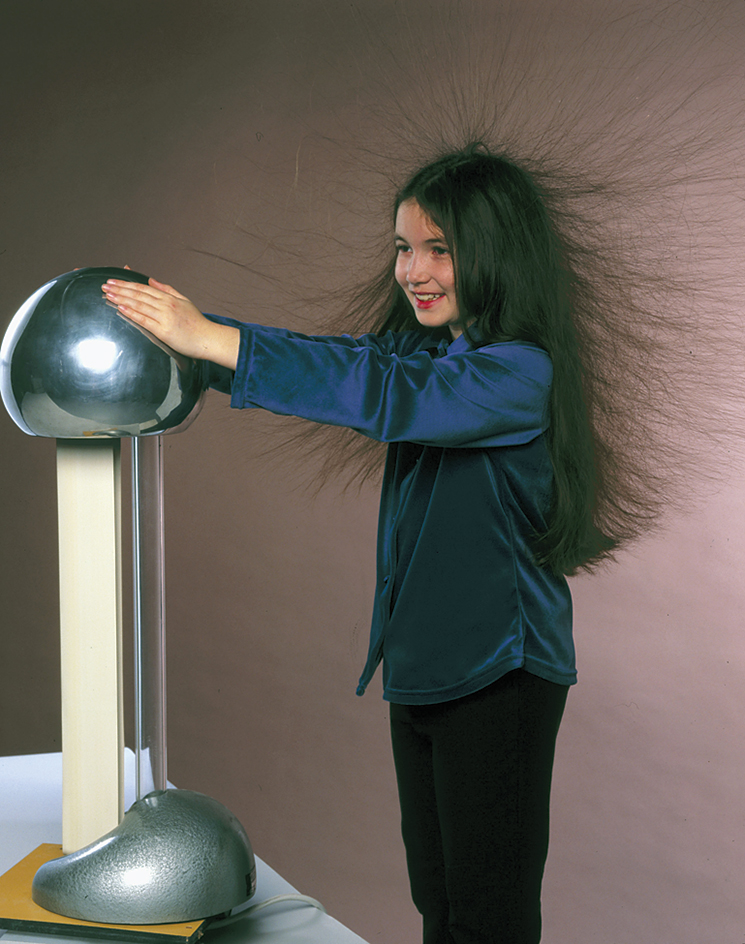Van de Graaff, << VAN duh `graf,` >> generator, also known as an electrostatic generator, is a device for building up a high electric charge. It is a source of charged particles that may be used for atom smashing. In general, the generator is used to boost protons and other nuclear particles to an energy of about 10 million electronvolts (10 Mev.). The machine can produce narrow beams of protons of known energies. Scientists use these beams to study nuclear forces.

Robert J. Van de Graaff made the first generator of this kind. In the generator, a continuous belt of an insulating material moves past a source of negative or positive electricity. This source sprays electrons or ions on the belt. The belt then goes into a hollow metal dome where a fine metallic brush moves the electrons or ions onto the dome surface. When the charge at the top of the dome is high enough, electrically charged particles are hurled from the top at targets at the bottom of the generator.
One problem with the Van de Graaff machine is the leakage of stored charge. To prevent leakage, a gas called sulfur hexafluoride under pressure as high as 150 pounds per square inch (10.5 kilograms per square centimeter) is put in a pressure vessel enclosing the machine.
An extension of the Van de Graaff generator is the tandem Van de Graaff. In this machine, higher energies are produced by doubling the number of accelerations.
